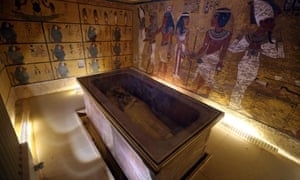
As even the least attentive school-age students of history will recall, Howard Carter’s discovery of Tutankhamun’s tomb in 1922 was the archeological discovery of that century. Now a find of similar importance could be soon unearthed – in a chamber directly behind that of the boy king.
Radar scans of Tutankhamun’s resting place in Luxor have shown a 90% chance that there are two hidden chambers to the rear of it, possibly containing metal and organic material, according to Egypt’s antiquities minister, Dr Mamdouh Eldamaty.
The presence of new tombs untouched for thousands of years adjoining one of the most famous burial places in history would be reason enough for excitement. But there is speculation that inside one of the chambers could be the remains of Queen Nefertiti, among the wives of Tutankhamun’s father and celebrated for a famous 3,300-year-old bust of her beautiful likeness.
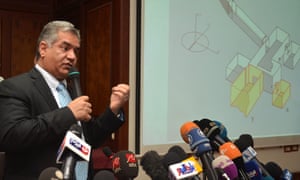
The scans were conducted after a theory proposed in October by the British Egyptologist, Dr Nicholas Reeves, speculating that beyond Tutankhamun’s chamber could lie the tomb of Nefertiti, who died in the 14th century BC. Some Egyptologists have cast doubt on Reeves’s hypothesis that murals inside Tutankhamun’s tomb point to a much grander chamber beyond, and his certainty that this could only be that of Nefertiti.
Speaking at a press conference on Thursday, Eldamaty declined to speculate on what might be found, saying only that the likelihood of finding a new tomb was now greater than his previous estimate of “67% sure”.
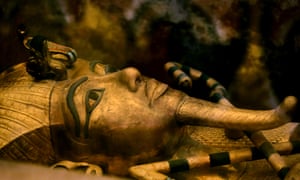
“We can say more than 90% that the chambers are there. But I never start the next step until I’m 100%. Maybe it could be the lady of the family, as Reeves has said,” said Eldamaty. “But I think we could find Kiya, or Ankhesenamun,” referring to the young pharaoh’s mother and his half-sister.
However, he did stress the apparent significance of the news: “This would be like having the discovery of Tutankhamun again. It could be the discovery of the century. It is very important for Egyptian history and for all of the world.”
Analysis of the fuzzy, colour radar scans, taken at the site in November by Japanese radar specialist Hirokatsu Watanabe showed anomalies in the walls of the tomb, indicating a possible hidden door and the chambers, which lay behind walls that were covered up and painted over with hieroglyphics.
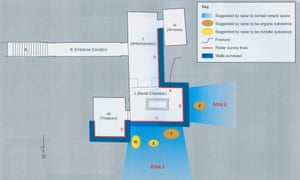
The next step, Eldamaty said, would be to find the exact dimension of the chambers, as well as the thickness of the adjoining walls. This could give some clue as to the nature, and grandeur, of the undiscovered chambers.
This would be done with more advanced scans at the end of this month. Only then, Eldamaty said, could thought be given to when a team might unseal any new rooms.
Any find would present a boost to Egypt’s rapidly declining tourism industry, stymied by years of political instability and the recent downing of a plane carrying mostly Russian tourists in the Sinai.
“The results are fabulous. It would be nice, as Dr Eldamaty said, to be 100% percent sure,” said Dr Salima Ikram of the American University of Cairo. “All of the Egyptologists alive now have missed out on Tutankhamun, so we want our own Tutankhamun! We want to be there, to experience it. We’re all terribly excited and rooting for it containing as much as possible.”

But even the discovery of new treasures would not be the end of the debate. “The whole thing presents a challenge to decide what to do,” explained archaeologist Michael Jones, of the American Research Centre in Egypt. “If they’re organic and metal remains, sometimes it’s best to just leave them in the ground. Archaeology is a process of controlled destruction. Unless there’s a real threat, the best thing might be to leave something where it is.”
Given the potential for the grave to be robbed and its contents sold on the illegal antiquities market, Dr Ikram disagreed. “If one knows that there’s something there, although in an ideal world we would leave some or all of it, given the fact that people know about it, I think it would be very irresponsible if we didn’t take the view of excavating this tomb and removing the material in a safe way,” she said.
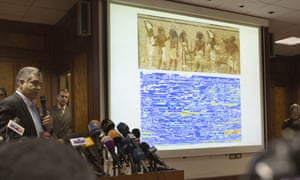
Tutankhamun died aged 19 in 1324 BC after nine years on the throne. His tomb was discovered by Carter in November 1922 on a dig financed by a British earl, Lord Carnarvon. It took Carter nearly six years to excavate more than 5,000 objects, among them the king’s sarcophagus and celebrated gold burial mask.
Artefacts from the dig have since been shown around the world, including a famous British Museum exhibition in 1972 which attracted 1.6 million visitors in nine months.
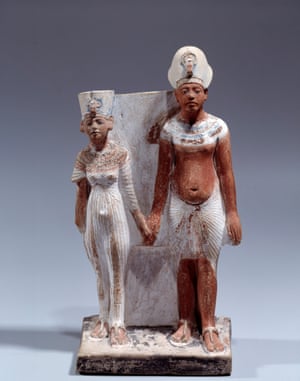
Nefertiti, whose image was immortalised in a bust now on display in a Berlin museum, was the primary wife of the pharaoh Akhenaten. There is some confusion over the order of succession, but Akhenaten was succeeded by two rulers known as Smenkhkare and Neferneferuaten. The order in which they ruled is uncertain, but Neferneferuaten is thought by some to have been Nefertiti. Neither ruled for long, however, before Tutankhamun, who has been show by genetic testing to have been Akhenaten’s son, took the throne.
Tutankhamun’s tomb is in Luxor, in southern Egypt, the pharaonic capital in ancient times. Researchers are scanning four pyramids for undiscovered rooms. The project, given the literal name of Operation ScanPyramids, is expected to continue until the end of 2016.
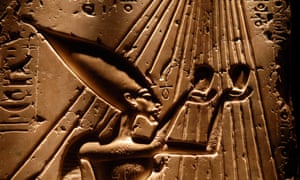
[Source:- The Hindu]


